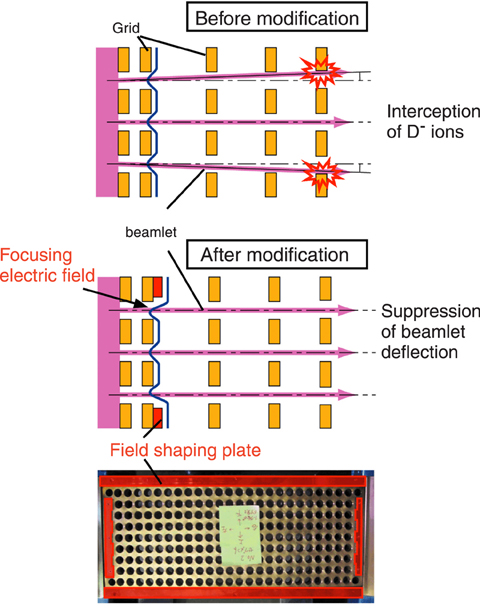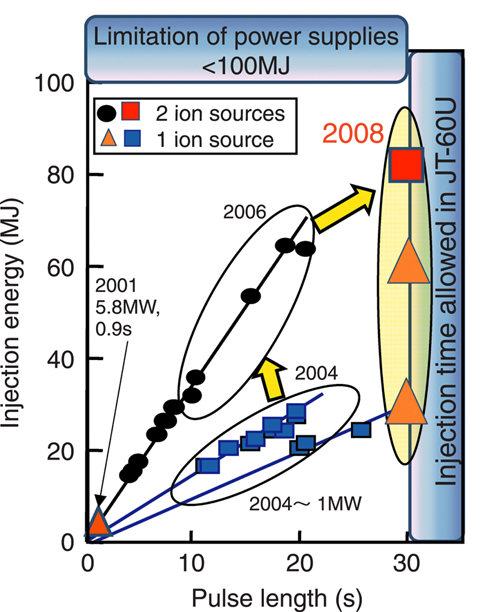
Fig.3-9 Schematic diagram of beam trajectories before and after modification

Fig.3-10 Injection energy achieved in negative-ion-based NBI (N-NBI) in JT-60U
Neutral beam injection is one of the promising methods for plasma heating. Neutral beam injectors (NBI) has been utilized in many experimental fusion devices, and will be used as the primary heating method in ITER and JT-60SA. In NBI, high energy deuterium ions are produced in an ion source and converted to neutral beams in a gas cell. The residual ions are removed and dumped, and only D0 beams are delivered into the plasma. High energy D0 beams of 0.5-1.0MeV are required to heat the core plasma in ITER and JT-60SA. In this energy range, the NBI is required to use high energy D- ions because neutralization efficiency of the D- ions is much higher than that of the D+ ions.
In ITER and JT-60SA, the injection pulse length is required to be range from 100 to 1000s which is 10-100 times longer than the rated pulse length of the negative-ion-based NBI (N-NBI) in JT-60U, 10s. To develop a long pulse N-NBI, the feasibility of long pulse injection in JT-60U was experimentally examined. One of the key requirements for long pulse injection is reduction of the power loading of the acceleration grids in the ion source.
The origin of the grid power loading was examined by calculating the beam trajectories with a 3 dimensional code. The calculation results showed that the outmost beamlets are deflected outward due to space charge repulsion and are intercepted by the acceleration grids. To suppress direct interception by the acceleration grids, a field shaping plate (FSP) was designed to deflect the outmost beamlets inward. The FSPs were installed near the outmost apertures of the acceleration grids (Fig.3-9). The use of the FSP successfully reduced the grid power loading to 500kW, an allowable level for long pulse operation. Since the ITER ion source has a structure of the accelerator similar to that of the JT-60 negative ion source, the FSP is expected to be effective for the ITER ion source as well.
The reduction of the grid power loading led to a 30s-pulse injection of 2MW D0 beams from each ion source (Fig.3-10). This is the world record for longest injection of high power neutral beams above 1MW. In this long pulse operation, the temperature of cooling water for the acceleration grid leveled off at lower than the maximum allowable level after 25s from the onset, and thus the existing water cooling system is expected to be sufficient for ITER and JT-60SA. The long pulse injection significantly contributed to a 28s-pulse production of high-βplasma of βN=2.6, which is equivalent to twice the output power of the ITER standard operation.